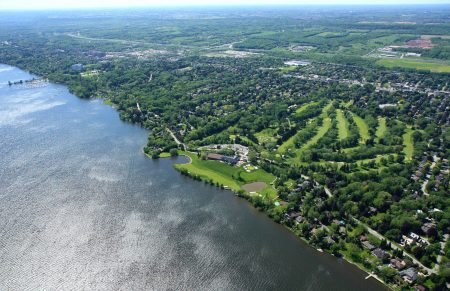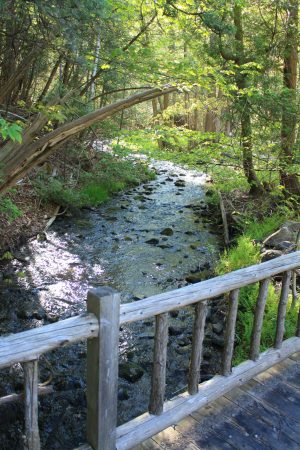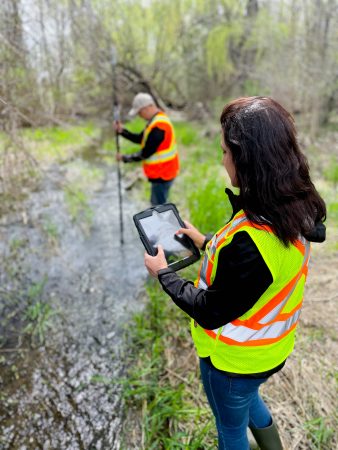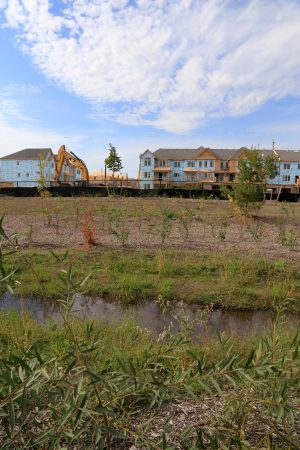Permitting and Planning relates to the roles and responsibilities of Conservation Halton as a regulatory authority, service provider, public commenting body, resource management agency, landowner and provincially-delegated reviewer for natural hazards. The department is made up of a multidisciplinary team including Environmental Planners, Planning Ecologists, Water Resource Engineers, Hydrogeologists and Regulations Officers.

The Planning and Regulations team at Conservation Halton carries out permitting, compliance and enforcement across the watershed as required by regulations enacted under the Conservation Authorities Act. The team also reviews a range of planning and development applications, as well as technical studies, under the Planning Act, Niagara Escarpment Planning and Development Act, Environmental Assessment Act and Aggregate Resources Act, and provides input on federal, provincial, regional and municipal policies and initiatives. The team is also responsible for developing policies and technical guides for permitting and plan review, which are approved by the Conservation Halton Board of Directors, as well as responding to changes to the Conservation Authorities Act.
Permitting and Planning includes the Floodplain Mapping program, which is responsible for updating flood hazard mapping across the watershed to support the planning and regulatory programs as well as flood warning and forecasting operations. This mapping also informs infrastructure design and management, flood mitigation efforts and emergency planning and response.
PLEASE NOTE: On February 16, 2024, the Province introduced a new regulation under the Conservation Authorities Act. Ontario Regulation 41/24: Prohibited Activities, Exemptions and Permits will come into effect on April 1, 2024. Among its changes, O. Reg., 41/24 alters the boundaries of CH’s regulated area; it increases the regulatory allowance in certain valley systems and decreases the regulated area around wetlands. For more information, please visit www.ontario.ca/laws/regulation/240041 and www.ontario.ca/laws/statute/90c27. A high-level summary of the key legislative and regulatory changes can be found here.
Conservation Halton is in the process of updating its Approximate Regulation Limit mapping for April 1. We are also working on transition procedures for any permit applications or appeals submitted or underway prior to O. Reg., 41/24 taking effect. We will keep our partners, stakeholders, and the public informed as we work to minimize disruptions to the development approval process and to update our implementation support materials.
Section 28 of the Conservation Authorities Act enables conservation authorities to develop regulations for certain activities in areas where public health and safety would be at risk because of naturally occurring processes (e.g., flooding, erosion) or where activities could either create a natural hazard or aggravate a natural hazard that already exists.
Permission is required from conservation authorities to undertake works in or adjacent to watercourses (including valley lands), wetlands, shorelines of inland lakes and hazardous lands as specified in S. 28 of the Conservation Authorities Act and attendant regulations.
In general, permits (permissions) may be granted where, in the opinion of the conservation authority, the activity is not likely to affect the control of flooding, erosion, dynamic beaches, or unstable soil and bedrock, and the activity is not likely to create conditions or circumstances that, in the event of a natural hazard, might jeopardize the health or safety of persons or result in the damage or destruction of property.
The administration of the regulation is guided by policies approved by the Conservation Halton Board. As of April 1, 2024, Conservation Halton must review and make decisions on applications for permits in accordance with Part VI of the Conservation Authorities Act and Ontario Regulation 41/24. This requires amendments to CH’s Policy Document entitled “Conservation Halton Policies and Guidelines for the Administration of Ontario Regulation 162/06 and Land Use Planning Policy Document April 27, 2006 (last amended, November 26, 2020)” to reflect this new framework. Staff is currently reviewing CH’s existing Policy Document and anticipates bringing updated policies (conformity updates only) to the Conservation Halton Board for approval at the end of Q2 2024.
Where discrepancies exist between the text of the legislation or regulation and the information provided within Conservation Halton’s existing Policy Document and Interim Policies and Procedures, the text of the legislation and regulation will prevail.
These policies complement the Ontario Provincial Policy Statement, Section 3.0 – Protecting Public Health and Safety and were developed with input from watershed municipalities and other stakeholders before they were approved.
If it can be demonstrated to the satisfaction of Conservation Halton that the proposed work meets the approved policies and will not likely affect the control of flooding, erosion, dynamic beaches or unstable soil and bedrock, or create conditions or circumstances that, in the event of a natural hazard, might jeopardize the health or safety of persons or result in the damage or destruction of property, Conservation Halton may grant permission for the proposed work.
Through the introduction of Ontario Regulation 686/21: Mandatory Programs and Services, under the Conservation Authorities Act, conservation authorities have been delegated the responsibility on behalf of the Ministry of Northern Development, Mines, Natural Resources and Forestry (MNDMNRF) to review applications or other matters related to the Planning Act to ensure that they are consistent with the natural hazards policies in the policy statements issued under Section 3 of the Ontario Provincial Policy Statement, 2020 – Section 3.0, Protecting Public Health and Safety, but not including those policies related to hazardous forest types for wildland fire. The delegation of responsibility does not extend to other sections of the Provincial Policy Statement (PPS) unless specifically delegated or assigned in writing by the Province.
Under Ontario Regulation 686/21, conservation authorities are also mandated to comment on the risks related to natural hazards arising from a proposal under the following legislation, where the conservation authority considers it advisable:
- The Aggregate Resources Act
- The Drainage Act
- The Environmental Assessment Act
- The Niagara Escarpment Planning and Development Act
Conservation Halton, in accordance with Sections 20 and 21 of the Conservation Authorities Act, is a local watershed-based natural resource management agency that is responsible for developing watershed-based resource management strategies that reflect local resource management needs within its jurisdiction. The programs and services included within the strategy can be mandatory, municipal or other, as defined in Section 21 and specified in Ontario Regulation 686/21. When providing advisory comments as a Resource Management Agency, Conservation Halton is guided by its watershed-based resource management strategy and policies approved by the Conservation Halton Board of Directors.
Conservation authorities are public bodies under Section 1 of the Planning Act and must be notified of municipal policy documents and applications under regulations made under the Planning Act.
With respect to natural hazards, whether acting as on behalf of MNDMNRF or as a public body, conservation authorities have the responsibility to review applications and other matters under the Planning Act and provide comments, technical support, or information to the responsible planning authority or, where requested, directly to the Ministry of Municipal Affairs and Housing, as outlined in Section 7 of Ontario Regulation 686/21.
Conservation authorities may also be identified as commenting bodies under other Acts and Provincial Plans.
Conservation authorities are landowners, and as such, may become involved in the planning and development process, as a proponent or in a third-party capacity as an adjacent landowner.





